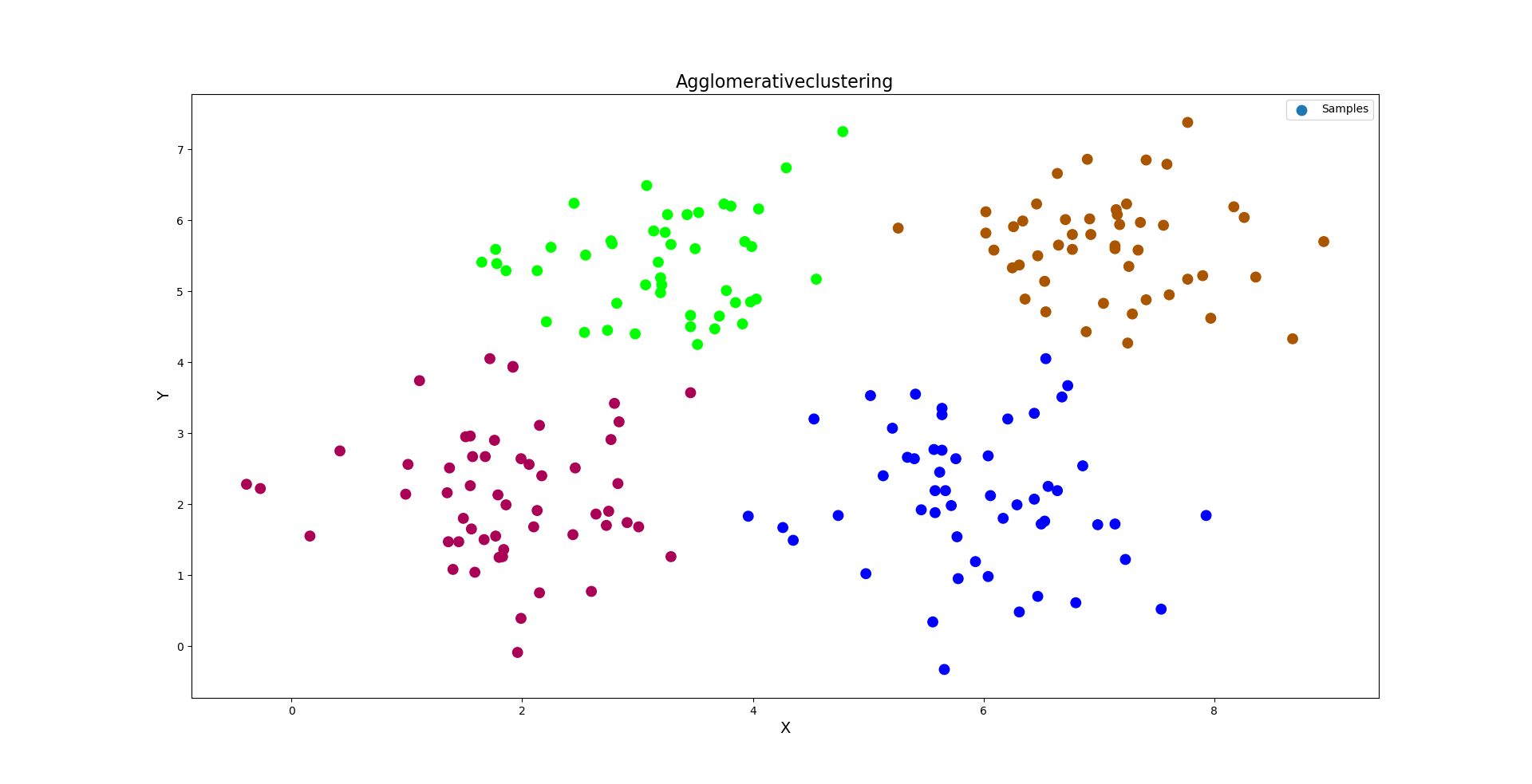''' 凝聚层次算法:首先假定每个样本都是一个独立的聚类,如果统计出来的聚类数大于期望的聚类数,则从每个样本出发寻找离自己最近的另一个样本, 与之聚集,形成更大的聚类,同时令总聚类数减少,不断重复以上过程,直到统计出来的聚类数达到期望值为止。 凝聚层次算法的特点: 1.聚类数k必须事先已知。借助某些评估指标,优选最好的聚类数。 2.没有聚类中心的概念,因此只能在训练集中划分聚类,但不能对训练集以外的未知样本确定其聚类归属。不能预测。 3.在确定被凝聚的样本时,除了以距离作为条件以外,还可以根据连续性来确定被聚集的样本。 凝聚层次算法相关API: # 凝聚层次聚类器 model = sc.AgglomerativeClustering(n_clusters=4) pred_y = model.fit_predict(x) # 返回值为当前样本所属类别 案例:重新加载multiple3.txt,使用凝聚层次算法进行聚类划分。 ''' import numpy as np import matplotlib.pyplot as mp import sklearn.cluster as sc # 读取数据,绘制图像 x = np.loadtxt('./ml_data/multiple3.txt', unpack=False, dtype='f8', delimiter=',') print(x.shape) # 基于Agglomerativeclustering完成聚类 model = sc.AgglomerativeClustering(n_clusters=4) pred_y = model.fit_predict(x) print(pred_y) # 画图显示样本数据 mp.figure('Agglomerativeclustering', facecolor='lightgray') mp.title('Agglomerativeclustering', fontsize=16) mp.xlabel('X', fontsize=14) mp.ylabel('Y', fontsize=14) mp.tick_params(labelsize=10) mp.scatter(x[:, 0], x[:, 1], s=80, c=pred_y, cmap='brg', label='Samples') mp.legend() mp.show() 输出结果: (200, 2) [1 1 0 2 1 3 0 2 1 3 0 2 1 3 0 2 1 3 0 2 1 3 0 2 1 3 0 2 1 3 0 2 1 3 0 2 1 3 0 2 1 3 0 2 1 3 0 2 1 3 0 0 1 3 0 2 1 3 0 2 1 3 0 2 1 3 0 2 1 3 0 2 1 1 0 2 1 3 0 2 1 3 0 2 1 3 0 2 1 3 0 2 1 3 0 2 0 3 0 2 1 3 0 2 1 3 0 2 1 3 0 2 1 3 0 2 1 3 0 2 1 3 0 2 1 3 0 2 1 3 0 2 1 3 0 2 1 3 0 2 1 3 0 2 1 1 0 2 1 1 0 2 1 3 0 2 1 3 0 3 1 3 0 2 1 3 0 2 1 1 0 2 1 3 0 2 1 3 0 2 1 3 0 2 1 3 0 2 1 3 0 2 1 3 0 2 1 3 0 2]
